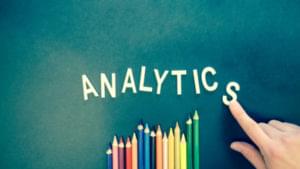Recently, David Attard wrote about analytics and KPIs (key performance indicators), and how they can be used to understand our website users better — and, in turn, to help us design better experiences for those users. He told us about the important metrics to analyze (time on site, bounce rate, conversions, exit rates, etc.), but also mentioned that, while these metrics help us to understand what users are doing (or not doing) on our website, the reasons why can still be a bit of a blur. This is because, while data is objective, the conclusions drawn from it are often subjective.
Even though KPIs describe our users’ behavior, more context is needed to draw solid conclusions about the state of our UX. In order for this to happen, we have to use other techniques — such as A/B testing and usability testing — to diagnose the UX flaws we identify through descriptive analytics. In this article, I’m going to explain the difference between descriptive analytics and diagnostic analytics, so that you have a realistic expectation of what descriptive analytics can do, and what you’ll need to gain from descriptive analytics before you begin A/B testing and usability testing.
Descriptive Analytics
Descriptive analytics in a nutshell: what has happened?
When you visit a nurse or doctor, it’s because you have undesirable symptoms that indicate bad health. You have trouble doing the things you need to do because of this. You don’t know what’s going on exactly, only that you aren’t functioning at an optimal level. This is likened to analytics, where business goals can’t be met because of bad user experience. Certain KPIs might indicate this, such as high bounce rate or low Avg. Time on Site.
KPIs describe the symptoms, but they don’t actually diagnose what the underlying issue is, and this is why we call them descriptive analytics. However, we can use the symptoms to help diagnose the UX flaws.
We can use tools like Kissmetrics to track and analyze KPIs, although many companies choose to use Google Analytics because it’s rather sophisticated for a free tool. As well as the KPIs mentioned in David’s article, analytics tools like Google Analytics can reliably tell us things about our users’ demographic and interests (that is, who they are and what they like), and also other important tidbits of information such as what device they’re using and where they’re from. This kind of data, even though it can’t be used to indicate website performance, can tell us a little more about the user intent.
Consider these descriptive analytics as background information that we can use to narrow down what’s going wrong exactly (i.e. user research).
Diagnostic Analytics
Diagnostic analytics in a nutshell: what can we do to fix it?
Let’s assume that your descriptive analytics indicate low sales, even though your website is receiving traffic. After setting up some Event Actions/Goals, you can see that users are adding items to the cart, but they’re not actually checking out. The data indicates that Exit Rates are high on the web page where users are expected to input their credit card information.
You’ve determined that low sales are likely due to a flaw in the user experience of this screen, but what is it? Here are some ideas:
- the form doesn’t work
- the form is too long
- the page doesn’t look trustworthy
- there’s a lack of customizable options
- an unexpected charge appeared.
Now, unless you’ve made a super obvious mistake (such as forgetting to serve the website over secure HTTPS), narrowing down the UX flaw(s) could to be difficult using only descriptive analytics. We have two options that can help to diagnose the issue(s): A/B testing and usability testing.
A/B testing can help you to implement a viable solution alongside the original implementation, to see which converts better. There’s also multivariate testing that can help you test more than one variation, but if you’re still relatively clueless as to where the UX is falling short, you could end up designing multiple variations and wasting time unnecessarily.
And this is where usability testing comes into the picture. Usability testing is about watching users use your website, to see where they struggle. While some flaws are hard to discover even through usability testing (since you can’t read the users’ minds), obvious flaws like form abandonment as a result of lengthy forms/broken functionality might become more apparent. At the very least, usability testing narrows down the issues, making A/B testing easier.
A/B testing tools such as Optimizely can help you run complex A/B tests, but Google Optimize (which is free and integrates directly with Google Analytics) is a decent free option. Tools like Hotjar and Fullstory can help with usability testing (feedback, surveys and heatmaps), whereas a tool like CrazyEgg combines both A/B testing and heatmaps into a single tool.
Bonus: Predictive Analytics
Predictive analytics in a nutshell: what might happen?
Predictive analytics is about analyzing what the user has done previously, in order to make informed decisions about what they’ll want next (or next time they visit). Consider it a subset of descriptive analytics that specifically focuses on customer journeys and personalized content, helping you to gain insights into how users convert or what content they’re interested in.
Predictive analytics sometimes uses machine learning as a way to deliver relevant, targeted content using data that your apps and websites have deciphered all by themselves. Since machine learning is automated, it’s recommended that you have large data sets to work with beforehand.
Fun fact: Amazon’s recommendations engine (“Customers who bought this item also bought”) is responsible for over 35% of their overall sales!
Conclusion
In short, descriptive analytics are about listening to the symptoms, and diagnostic analytics are about finding a solution. You can use what you now know about diagnostic analytics to ensure that you’re going about descriptive analytics and Google Analytics in the right way, since descriptive analytics are needed to inform your approach to A/B testing and usability testing later on.
In a future article, we’ll introduce you to Google Analytics and talk more about KPIs.
To learn in-depth about UX Analytics, check out SitePoint’s book Researching UX: Analytics.
Frequently Asked Questions (FAQs) on Descriptive and Diagnostic Analytics
What is the main difference between Descriptive and Diagnostic Analytics?
Descriptive analytics is the process of analyzing historical data to understand what has happened in the past. It uses data aggregation and data mining techniques to provide insight into the past and answer: “What has happened?”. On the other hand, diagnostic analytics is a deeper look at data to understand the root cause of the outcome. It answers the question: “Why did it happen?” by finding patterns and relationships in information.
How can businesses benefit from Descriptive and Diagnostic Analytics?
Businesses can use descriptive analytics to understand past behaviors and learn how they might influence future outcomes. It provides a historical view of the business operations, customer behaviors, and market trends. Diagnostic analytics, on the other hand, helps businesses to drill down into their data, find patterns, identify anomalies, and understand the cause of a particular outcome. This can help in making informed decisions and strategic planning.
Can Descriptive and Diagnostic Analytics be used together?
Yes, descriptive and diagnostic analytics can be used together. In fact, they often complement each other. Descriptive analytics helps in understanding what has happened in the past, while diagnostic analytics helps in understanding why it happened. Using them together can provide a comprehensive view of past data and its analysis.
What are some tools used for Descriptive and Diagnostic Analytics?
There are several tools available for descriptive and diagnostic analytics. Some of the popular ones include Tableau, Power BI, QlikView, and Looker. These tools provide functionalities for data aggregation, data mining, data visualization, and drill-down capabilities.
What skills are required for Descriptive and Diagnostic Analytics?
The skills required for descriptive and diagnostic analytics include a strong understanding of data analysis, data mining, and statistical techniques. Knowledge of data visualization tools and software is also important. Additionally, analytical thinking and problem-solving skills are crucial for interpreting data and finding patterns.
How does Diagnostic Analytics contribute to problem-solving?
Diagnostic analytics contributes to problem-solving by identifying the root cause of a problem. It involves drilling down into data, finding patterns, and understanding the relationships between different data points. This can help in identifying the factors that led to a particular outcome or problem.
What are the limitations of Descriptive and Diagnostic Analytics?
While descriptive and diagnostic analytics provide valuable insights into past data and the reasons behind a particular outcome, they do not predict future events or outcomes. They are also dependent on the quality and accuracy of the data. Inaccurate or incomplete data can lead to incorrect conclusions.
How can Descriptive and Diagnostic Analytics improve decision-making?
Descriptive and diagnostic analytics can improve decision-making by providing a clear understanding of past events and the factors that led to those events. This can help in identifying trends, patterns, and anomalies, which can inform future decisions and strategies.
Can Descriptive and Diagnostic Analytics be used in all industries?
Yes, descriptive and diagnostic analytics can be used in all industries. They are particularly useful in industries that generate large amounts of data, such as retail, healthcare, finance, and marketing. They can help in understanding customer behavior, market trends, operational efficiency, and more.
What is the future of Descriptive and Diagnostic Analytics?
The future of descriptive and diagnostic analytics is promising. With the increasing amount of data being generated, the need for tools and techniques to analyze this data is also growing. Advances in technology are also making it easier to collect, store, and analyze data. As a result, the use of descriptive and diagnostic analytics is expected to grow in the coming years.
 Daniel Schwarz
Daniel SchwarzPreviously, design blog editor at Toptal and SitePoint. Now Daniel advocates for better UX design alongside industry leaders such as Adobe, InVision, Marvel, Wix, Net Magazine, LogRocket, CSS-Tricks, and more.








